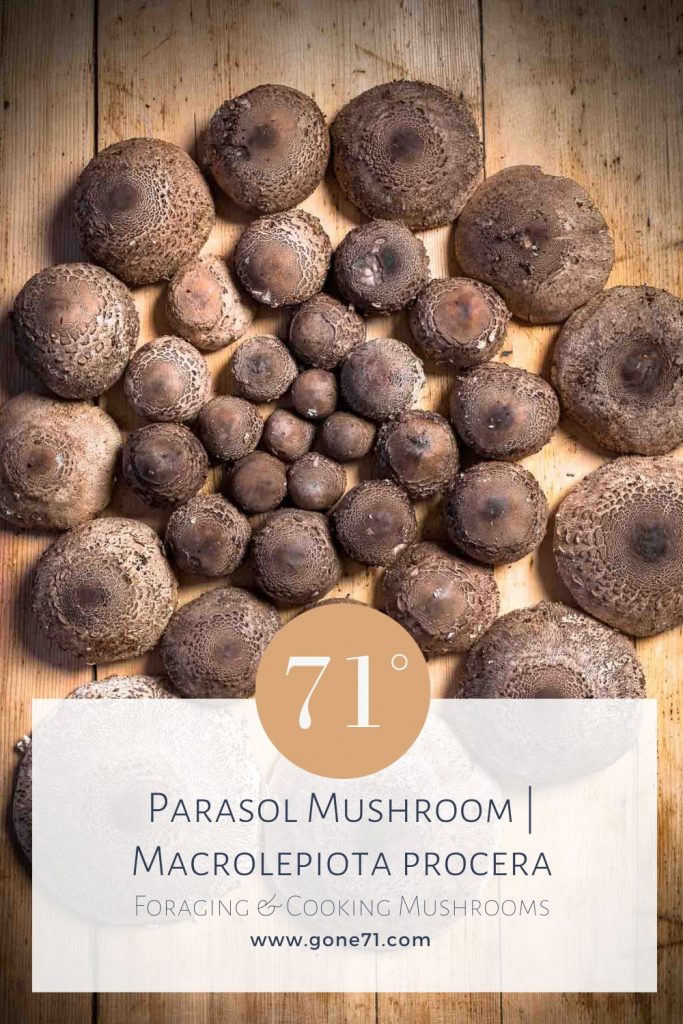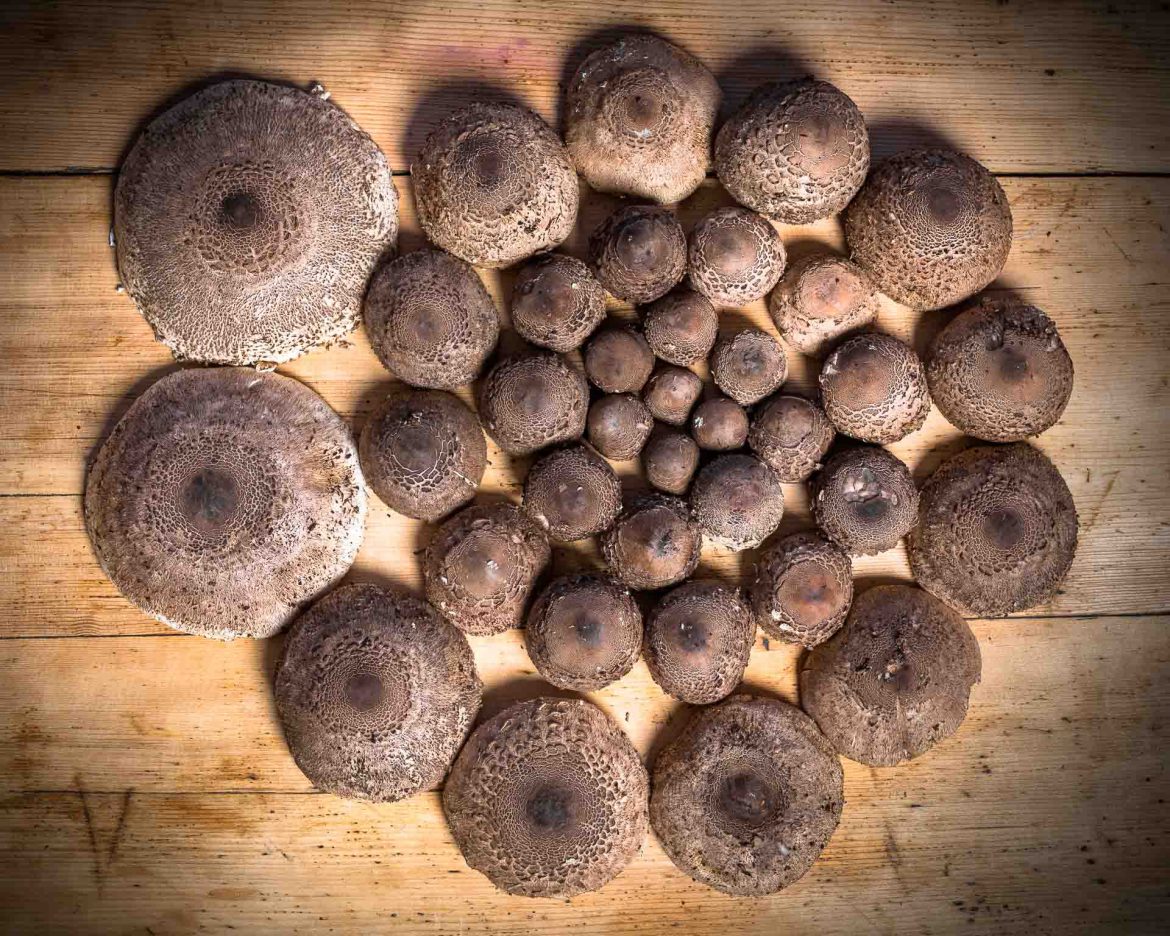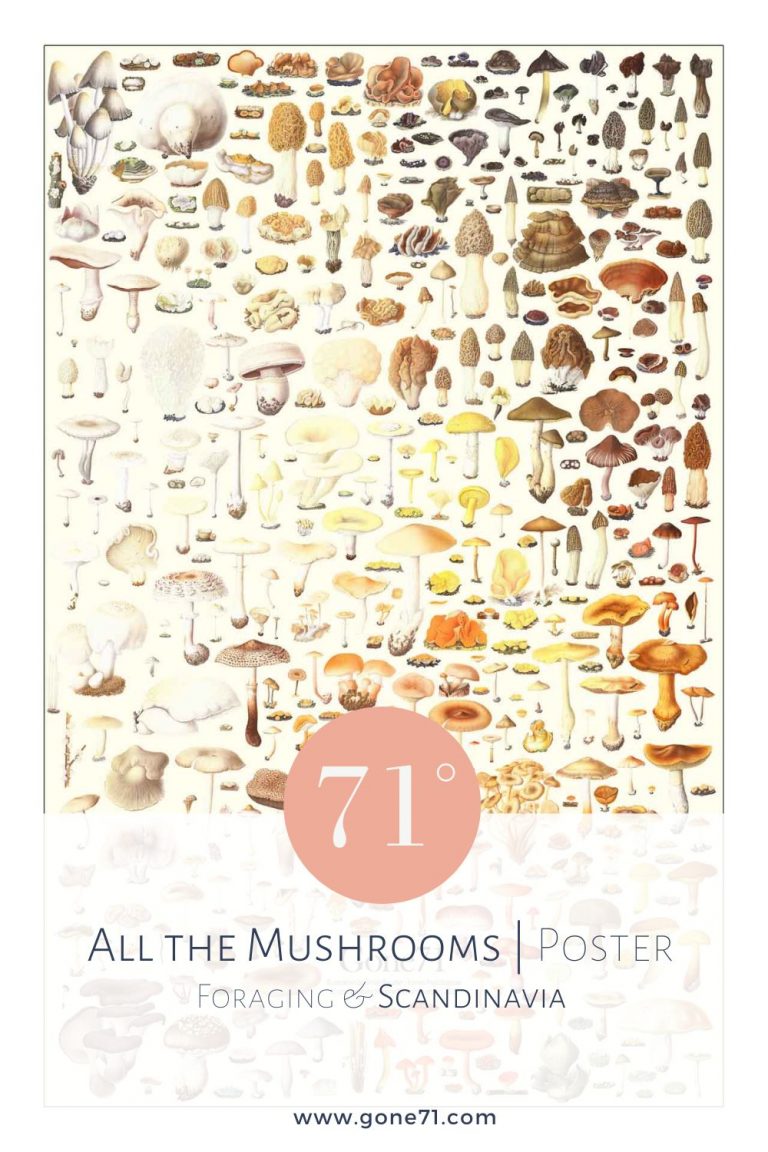swe.: Stolt fjällskivling | nor.: Parasollsopp | fin.: Ukonsieni | dt.: Parasol, Riesenschirmling
Parasol mushrooms can be found all over the world and they are a very welcome food source in most kitchens. With a general hight of up to 40 cm and a cap diameter almost equally to that, this a giant among edible fungi – the guardians of the forest.
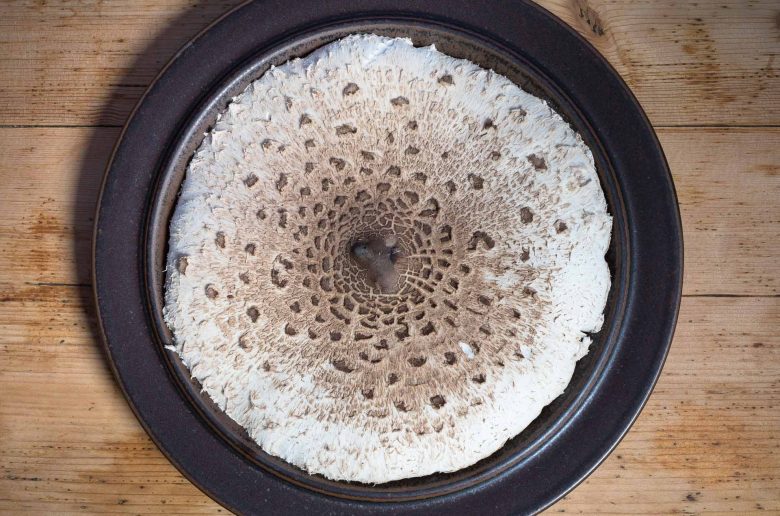
Appearance of parasol mushrooms
Very young fruiting bodies resemble a drumstick. When the cap opens up the hat skin tears open and the typical brown scales manifest. Due to their dark colour, they stand out clearly from the predominantly whitish background and do not extend to the edge. In the middle, the hat surface hardly tears, which means that it remains smooth and dark brown there. The lamellas are initially white, later cream-colored. They are not connected to the stem and can be easily detached from the hat. The ring (annulus) is thick, padded and movable. The white flesh remains uncoloured if injured. It smells faintly mushroom-like and tastes a bit nutty.
diameter: up to 30 cm
height: up to 40 cm
months: May – November
colour: light-brown cap with darker scales, light-brown stem with darker pattern
habitat: oak, beech, meadow, road side, forest’s edge
characteristic: moveable ring, size
consumption: cooked
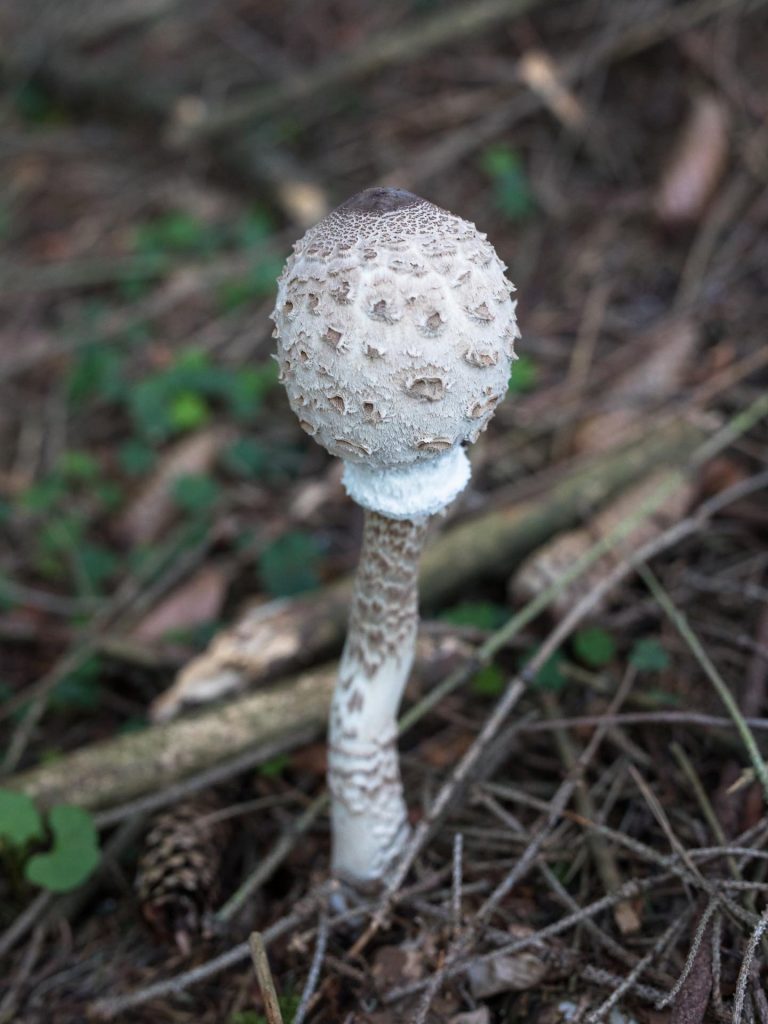
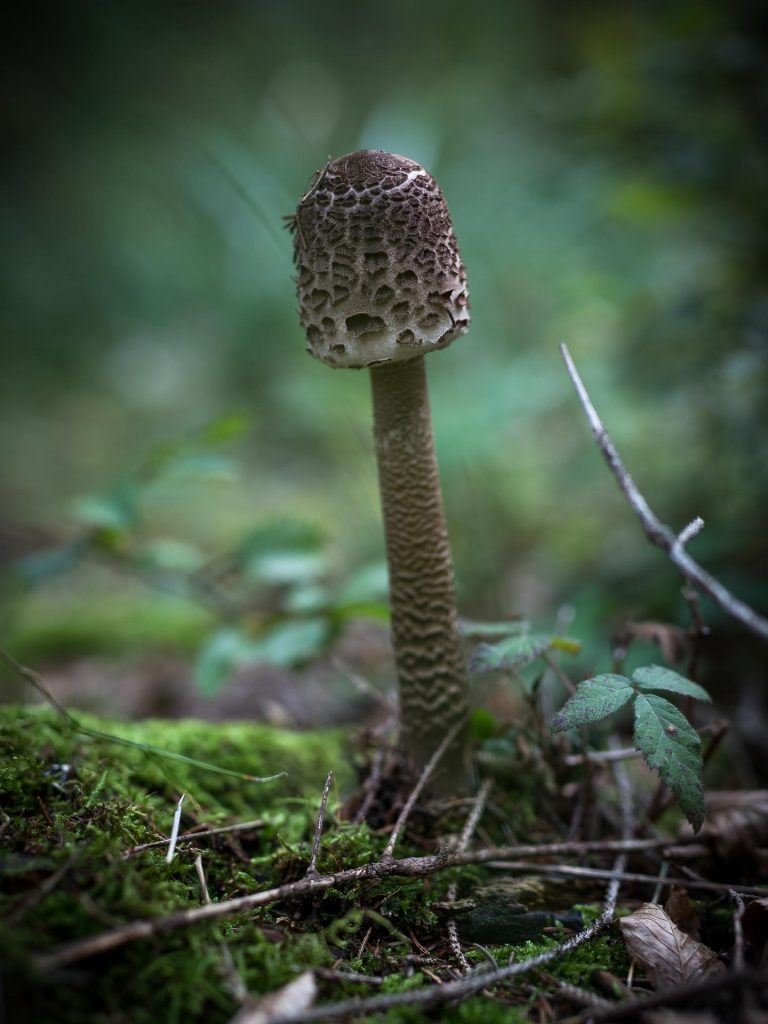
Facts about parasol mushrooms
The name Parasol is an outdated term for “parasol” (borrowed from French parasol in the 18th century, from Italian para il sole “keep the sun off”) and alludes to its characteristic shape – large, umbrella-like hat on a long slender stem.
Only few people know that what we commonly call ‘parasol mushroom’ actually refers to several different species or at least varieties. Macrolepiota procera happens to be the most common however in our recipe we use the much darker and less common Macrolepiota procera var. fuliginosa (ger.: Rußbrauner Riesenschirmling). The scales on the cap are finer and darkly tinted sepia brown on this one. The stalk is densely covered with very fine flakes. Its surface turns red-brown after scratching. All forms of the parasol are edible and are considered very good edible mushrooms.
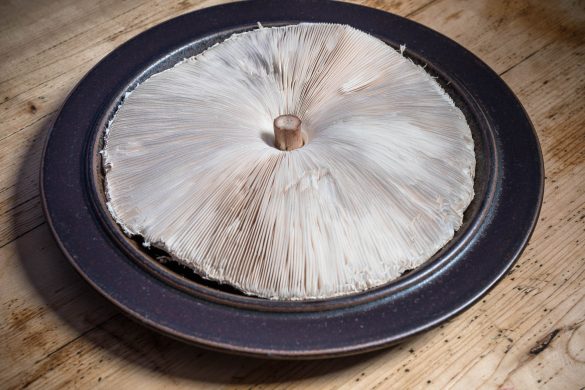
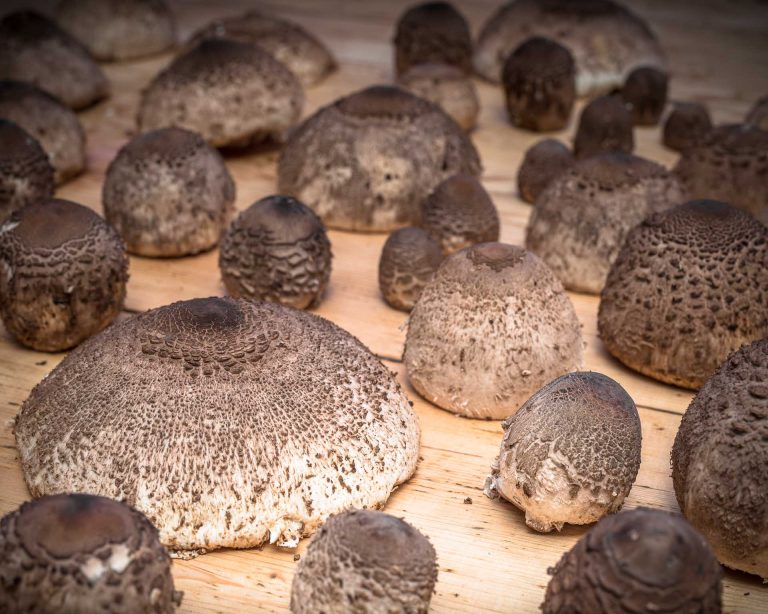
This said, it is an absolute must to identify parasols as such in the first place. The first thing with all species from the genus Macrolepiota is, the ring on the stem MUST be movable and otherwise it is NOT a parasol mushroom! Unfortunately there are also poisonous mushrooms that have a similar appearance and a movable ring. Consult your mushroom guidebook for a proper identification in your part of the world if you have any doubt.
Confusing the parasol mushroom with the shaggy parasol
Probably the most common confusion with other mushrooms happens with the genus Chlorophyllus. Especially those mushrooms known under the name shaggy parasol (e.g. Chlorophyllum rhacodes, C. olivieri and C. brunneum). They are generally smaller in stature and the flesh of these species immediately turns saffron when injured. In German, for example, it has the name “Safranschirmling” (safran parasol). Shaggy parasols are also edible, but there are also related species in Europe that have a very similar appearance and are poisonous. Extreme caution is therefore required here.
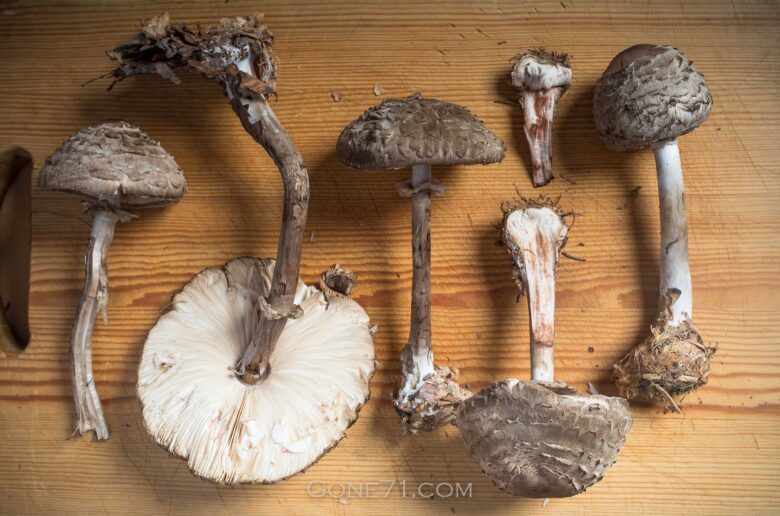
Habitat of parasols
The common parasol can be found in almost all forest types as well as on open grassland and on loamy, fresh soils. However beech and oak forests as well as meadows and pastures, parks, paths and forest edges are preferred.
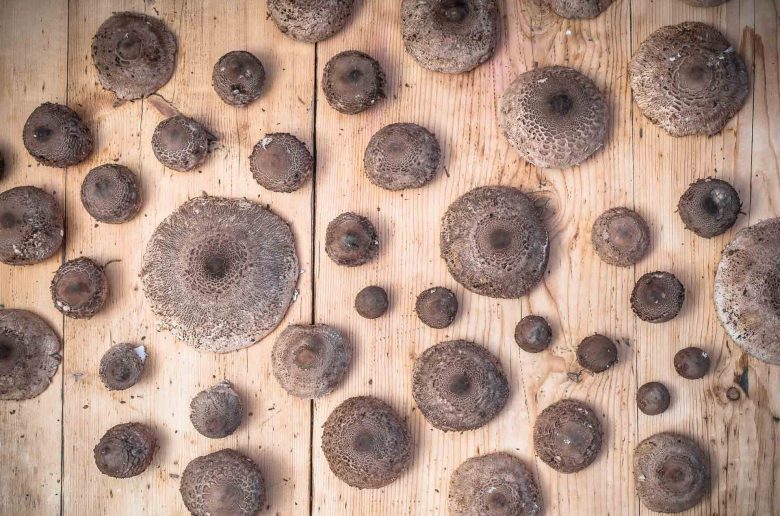
Kitchen use of parasol mushrooms
Usually only the caps are used for preparation in a similar way as schnitzel. The stems are usually tough and not suitable for direct consumption. They can be dried and grinded to powder for seasoning though. The great thing about these giants is, that they are growing from spring until late autumn and usually we find them in larger quantities. Due to their size they make for a substantial meal and often you can find way more then you can eat. Unless you have plans to store them in your freezer (we’ll come to that) or dry some of them, you should not take more then you actually need.
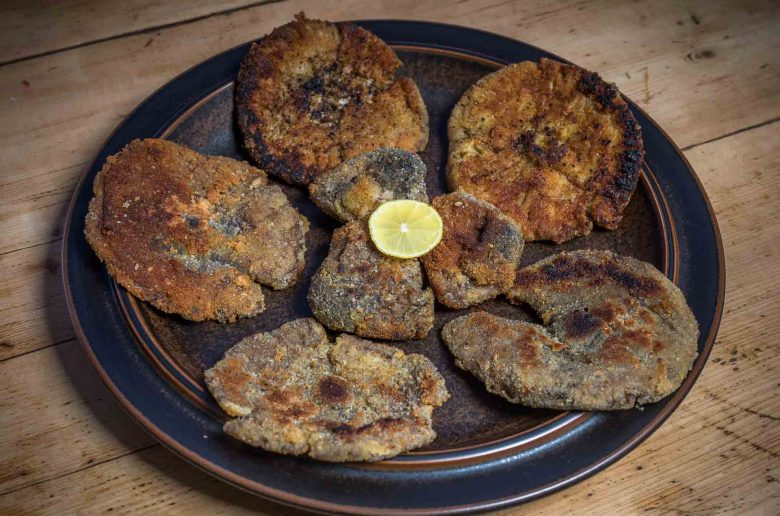
Breaded parasols are the absolute kitchen classic and you should at least try it once to make your own opinion. They can also be sautéed, baked or eaten in soupes. If you want to store them in the freezer you should bread them first. You can use the frozen parasol on demand in portions. Simply put the still frozen chunks into the frying pan or a deep fryer. Once the mushrooms thaw they render into an inedible slush.
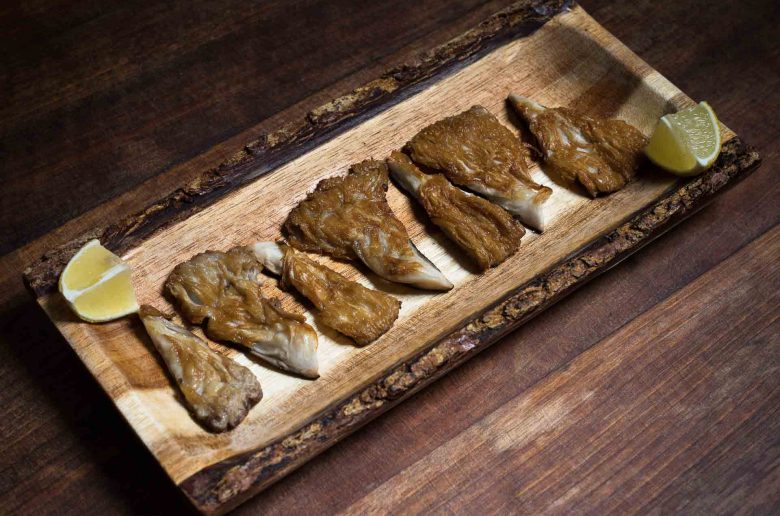
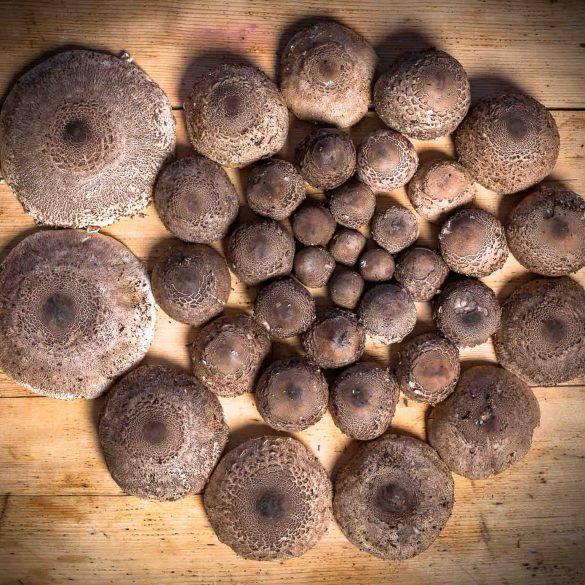
Parasol mushroom breaded and fried
Ingredients
Parasol mushroom – 6 big caps (fresh)
Egg – 1
Flour – 50 g
Breadcrumbs – ½ cup
Oil (for frying) – depends on your pan
Salt – on demand
Lemon – ½
Instructions
- Clean the parasol mushrooms preferably without water.
- Remove the stems.
- Whisk the egg and add some salt. Some people also use pepper but we think this mushrooms have a great original taste.
- If you have half opened caps it is easier to cut them in half before breading.
- Bread the mushrooms - first turn the hats in flour, then in the beaten egg (turn well) and then turn into a plate with breadcrumbs.
- Fry until they get a golden crisp texture. Usually around 2 minutes per side is good.
- Serve with lemon.
Notes
Sautéed Parasols: If you want to sauté the parasol, simply leave the flour, egg and breadcrumbs out and put them in the pan with some oil. This way the whole texture will get more soft and chewy. If you have a lot of very young specimen you can fry them as a whole and serve them on a stick.
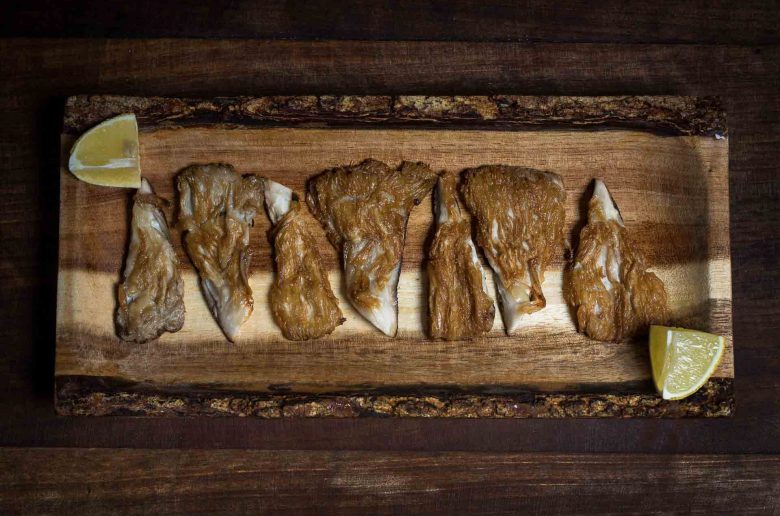
Find some inspiration in other mushroom recipes
↓↓↓
We have compiled this overview with the best of knowledge and belief, but do not claim to be complete and reserve the right to make errors.
Learn more about poisonous mushrooms and mushroom poisons here
↓↓↓
